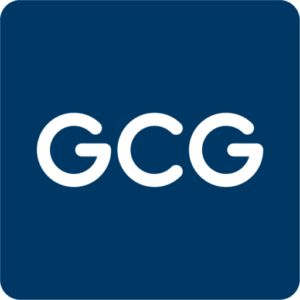
GCG Leadership Development Team
The business landscape of 2025 is marked by rapid technological advancements, emerging trends, and shifting priorities, leaving leaders to navigate a complex environment. To thrive amidst these challenges, a change in approach is essential. A minimalist leadership style, marked by an intentional focus on core objectives and priorities, can empower organizations to achieve more through simplicity.
Maximizing Impact with Minimalist Leadership
Minimalist leadership involves cutting through the noise to focus on what genuinely drives the organization forward. By intentionally choosing a few high-impact priorities and executing them with exceptional discipline, leaders can ensure both productivity and well-being within their teams. An organization with a clear vision and shared goals creates an environment where employees feel engaged and motivated to contribute their best efforts.
The Pitfalls of Juggling Too Many Priorities
Trying to do too much can lead to stress, burnout, and disengagement, impacting the organization’s overall performance. Research by Deloitte found that over 40% of executives, managers, and employees frequently experience stress or exhaustion. Leaders must recognize the consequences of overloading teams and prioritize a balanced workload. By establishing boundaries and preventing employees from becoming overwhelmed, organizations can foster a more focused, innovative, and purpose-driven workforce that effectively meets business objectives.
Six Strategies for Minimalist Leadership Success
1. Refocus on Core Goals
Identify and commit to your organization’s top three objectives for the year, pushing secondary goals to the sidelines. Provide clear guidance and metrics for success to align the team on priorities. Check-in regularly to ensure the team stays on track and feels connected to the organization’s mission.
2. Strategic AI Integration
Invest time in understanding AI capabilities and how they can transform your organization. Utilize AI as a complementary tool, streamlining repetitive tasks and data analysis, to free up human talent for high-impact creative and strategic projects. By automating low-value tasks and focusing on human ingenuity, organizations can create a competitive advantage in an ever-changing market.
3. Eliminate Busy Work
Identify outdated processes with limited returns, and replace them with meaningful work that fosters innovation. Encourage employees to critically review their day-to-day tasks, identifying areas for improvement and potential sources of inefficiencies. Work together to create new processes and workflows that enable employees to deliver their best efforts and drive real change within the organization.
4. Prioritize Employee Well-Being
Offer mental health support, flexible schedules, and simplified workloads to increase morale and productivity, promoting a healthier work environment. Invest in programs and activities that foster a culture of well-being, such as training seminars, mental health days, team-building exercises, and mentorship opportunities. Creating an environment where employees feel supported, valued, and engaged is essential for sustained success and improved retention rates.
5. Enhance Communication Efficiency
Simplify communication through concise, actionable messages, providing clear direction and saving valuable time for leaders and employees alike. Encourage open dialogue, active listening, and transparent feedback within the organization. Streamline procedures such as meetings, presentations, and email communications to improve efficiency and minimize time spent on non-essential tasks. By establishing a clear communication structure, leaders can facilitate problem-solving, collaboration, and innovation more effectively.
6. Launch Pilot Programs
Test one innovation before starting multiple projects. Gather insights from this one pilot program and scale thoughtfully, ensuring dedication to proven ideas instead of scattering efforts across premature initiatives. Involve employees in the decision-making process, promoting a sense of ownership and fostering a culture of continuous learning and improvement. This approach allows for better allocation of resources and ensures a more significant return on investment.
Preparing for the Future of Leadership
Given the rapidly evolving landscape, it is vital for leaders to adapt and adopt innovative management practices to remain relevant and successful. Embracing minimalist leadership principles enables organizations to shift focus from constant expansion to sustainable growth.
As leaders look towards the future, they must ensure that their organizations are equipped with the right people, tools, and strategies to navigate this era of change. This includes implementing continued learning and development programs, fostering a culture of adaptability and resilience, and proactively building strong relationships with employees, clients, and other stakeholders.
At Global Coach Group (GCG), our network of over 4,000+ experienced coaches is dedicated to delivering tailored leadership coaching to help leaders become more self-aware, improve their communication strategies, and ultimately drive better team performance.
For leaders who want to become coaches or coaches looking to enhance their leadership coaching skills, Global Coach Group (GCG) provides a comprehensive leadership coaching certification program. GCG’s internationally acclaimed coaching tools and resources can help you improve your coaching proficiency and empower you to guide others.

GCG Leadership Development Team
Learn about the GCG's Coaching Tools
Measurable results, in LESS Time.
Reduce your session prep and follow-ups to just 15 minutes, while delivering coaching that improves leadership, team and business performances with 95% coworker satisfaction
